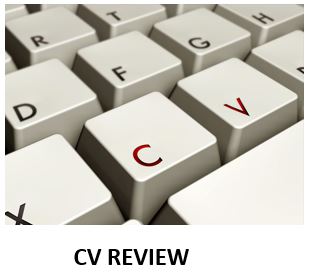Seven ways to improve your CV
We get to see hundreds of CV’s and Profiles of candidates and whilst many are ‘good’ in that we can at least see and understand what they do, many are pretty poor and a good number of them could do with being made fit for purpose! You don’t want the first impression that your CV makes to be its last, so it’s worth a little effort to make sure it is not discarded too easily or remembered for the wrong reason. Don’t forget that the only reason for your CV is to get you an interview…
It is surprisingly easy to update and improve your CV in seven easy steps:
One: Banish the buzzwords
Enthusiastic, focused, passionate, dynamic, ambitious, successful, natural leader…you may think that you are being original by using these words to describe yourself but, believe me, when everyone includes these words on their CV they are no longer stand out traits. Also, if you work in a technical industry don’t assume that everyone knows what the abbreviations you litter your CV with mean – they won’t!
Although, you should:
Two: Add keywords
Most CV’s will be stored electronically and in many cases be scanned and added to a database automatically. As a consequence, make sure that your CV is sprinkled with keywords for the role, sector or industry you are interested in so that if any keyword searches are done, you are in the mix. You should do the same on your LinkedIn profile, which is your on-line CV…
Three: Check your grammar
In our connected, automated world it is so easy to rely on your computer to spell-check and grammar check your CV. Don’t. Make sure you check it several times and also get someone else to check it for you. Words like form, manger, roll and fro are proper words but they are not the same as from, manager, role and for! If left in your CV they make you look at best lazy and at worst, very poor at writing.
Four: Put your contact details at the top of page one
Most CVs are read on a screen rather than printed and there is nothing worse than hunting around for your contact details; also, if it is being read by software in order to place it on a database then if it can’t ‘read’ it, your details won’t appear on their system.
Amazingly, at least 5% of the CV’s we receive have no contact details on them whatsoever, which makes it very hard to contact you: I suppose we could try and find your original email with them on, but if we can’t, you are off the list. So please make sure the details of who you are and how to contact you are prominently displayed, preferably at the top of the first page. This should include your name, telephone/mobile number and email as a minimum.
Five: Tell them what your employer does
There are one million companies in the UK and, believe it or not, we don’t know what all of them do! If you can tell us what your employer does, what sector it is in and how big it is that would be enormously helpful, especially when the client wants someone from the same, or a similar, sector.
Six: Keep it simple - avoid messy layouts
Boxes, headings, side bars, graphics and different fonts and sizes may look good but they are hard to read and analyse, both manually and by software: I am sure you would rather we focused on your experience instead of marvelling at your splendid document. Granted, if you are an Architect, Interior Designer or Artist we’ll let you off, but even then we don’t want an 8MB pdf that we can’t forward to the client.
Seven: Help the recruiter
What a recruiter wants to see is who you are, who you work for, what role you do and what experience you have in the sector and role we are recruiting for. If we can’t find that on your CV we may contact you for further information or we may move on to the next candidate. Many CV searches are electronic and look for keywords – company names, sectors, job titles, qualifications, industry keywords and so on. If they are not on your CV, our search cannot find you…

Links to other pages
CV Review
Interview Skills Training
Preparing your CV
Why doesn’t my CV fit?